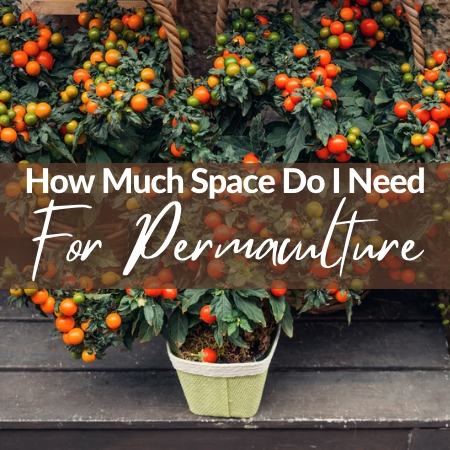You don’t need much space to practice permaculture. It can be practiced on a balcony, in an urban garden or in a large homestead. It is a lifestyle choice and its methods are adaptable and scalable.
Permaculture is a lifestyle. You can read more about that on our post here. Using only some of the permaculture methods means you’re living more sustainably. Some people have balcony gardens, while others have full-scale homestead operations. This blog is going to include a lot of different videos to really demonstrate to you that permaculture can be practiced on any scale!
The Balcony Garden
A balcony garden is very easy to manage because you interact with them constantly, making it easy to spot pests and diseases when they attack. You may be in an apartment without a balcony, in which case you may want to make space under a sunny window or start vertical shelves with grow lights for indoor systems! In these smaller operations, you may not be able to grow all of your food but you can grow some! And, the harvest is far more manageable too!
Balcony and indoor gardens usually consist of small compost systems, potted plants, small animal systems (rabbits being the most common), drip irrigation, and vertical growing space. Rabbit manure can be applied directly to the potted plants making their manure a very good source of fertilizer. Kitchen scraps can be added to vermicompost which takes up very little space and can even be kept in a closet! By using vertical space, you maximize your growing potential also. Check out this great tour in Nairobi with Morag Gamble on a permaculture balcony:
Urban Permaculture
This month is actually urban agriculture month! So I would like to highlight a few clips here on how you can also grow food on an urban scale! Some of these clips will go over what challenges you might run into, as well as many different methods you can implement too! Urban permaculture, much like the balcony garden, is really manageable and produces a pretty high and diverse yield as well! It can be practised in cold climates, or warm, and in smaller backyards or large. Some people choose to grow in rows, while others implement a perennial food forest. It depends on the size, shape, community guidelines, and personal preference or need.
By creating your own compost, using weeds in weed tea, harvesting water, and saving your seeds, you can really save a lot of money, time, and energy. Practicing permaculture in an urban backyard may be subject to restrictions, so always double-check whether your city allows backyard chickens, or has water harvesting limits.
Australia
https://www.youtube.com/watch?v=CCWVgouTcL4https://www.youtube.com/watch?v=sWjSY6sdBtU
Northern Climates
https://www.youtube.com/watch?v=9SRsmrX-GZ0https://www.youtube.com/watch?v=ejx6zJQ6Gcc
Market Gardens to Homestead Designs
Market gardens and homesteads are somewhat different, though they can have many crossovers. Market gardens are smaller in scale than a homestead but are often found on land that’s 1-5 acres. Market gardens may or may not include animals, whereas a homestead usually operates with livestock for meat and manure production. While the functionality of these designs may be different, both require a larger amount of space to be successful. Market gardens are usually designed to grow food, and support the community, whereas homesteads can often be designed for more self-reliant living.
Market gardens are usually more organized to allow for ease of harvest, and focused on food production. They use crop rotation, companion plants, syntropic systems, and beyond! The objective is to create enough food to feed a community through CSA programs, or farmers’ markets. Small animals may be housed on-site to add protein (eggs or meat) or they may be kept for manure and soil building. Market gardens
A homestead can be done on an acre, but generally, homesteads are designed on larger plots of land in order to fully sustain the needs of the occupants. Those needs include water, food, energy, and income. As you can imagine, livestock need feed too… so there needs to be ponds and crops grown for the animals as well as the humans. Homesteads can be for community purposes, but generally speaking, they’re for family or multi-family needs. Earthworks, livestock rotation, chicken tractors, market gardens, swales, and ponds, may all be found on a homestead-designed property.
Homesteads
https://www.youtube.com/watch?v=ZvkN4BvLjychttps://www.youtube.com/watch?v=Yg5mzpjmOrIhttps://www.youtube.com/watch?v=Yg5mzpjmOrI
Conclusion
Permaculture is a way of life, and therefore can be practised on any size of land. The smaller the space, the more intensive the growing! The more land you have, the more you can do with it (or, the more conservation you may choose to practise also). Some people in apartments with less room might choose to practise social permaculture (people care), while those in large areas may have market gardens or livestock production! Everyone can live a permaculture lifestyle, no matter the size of their property.



